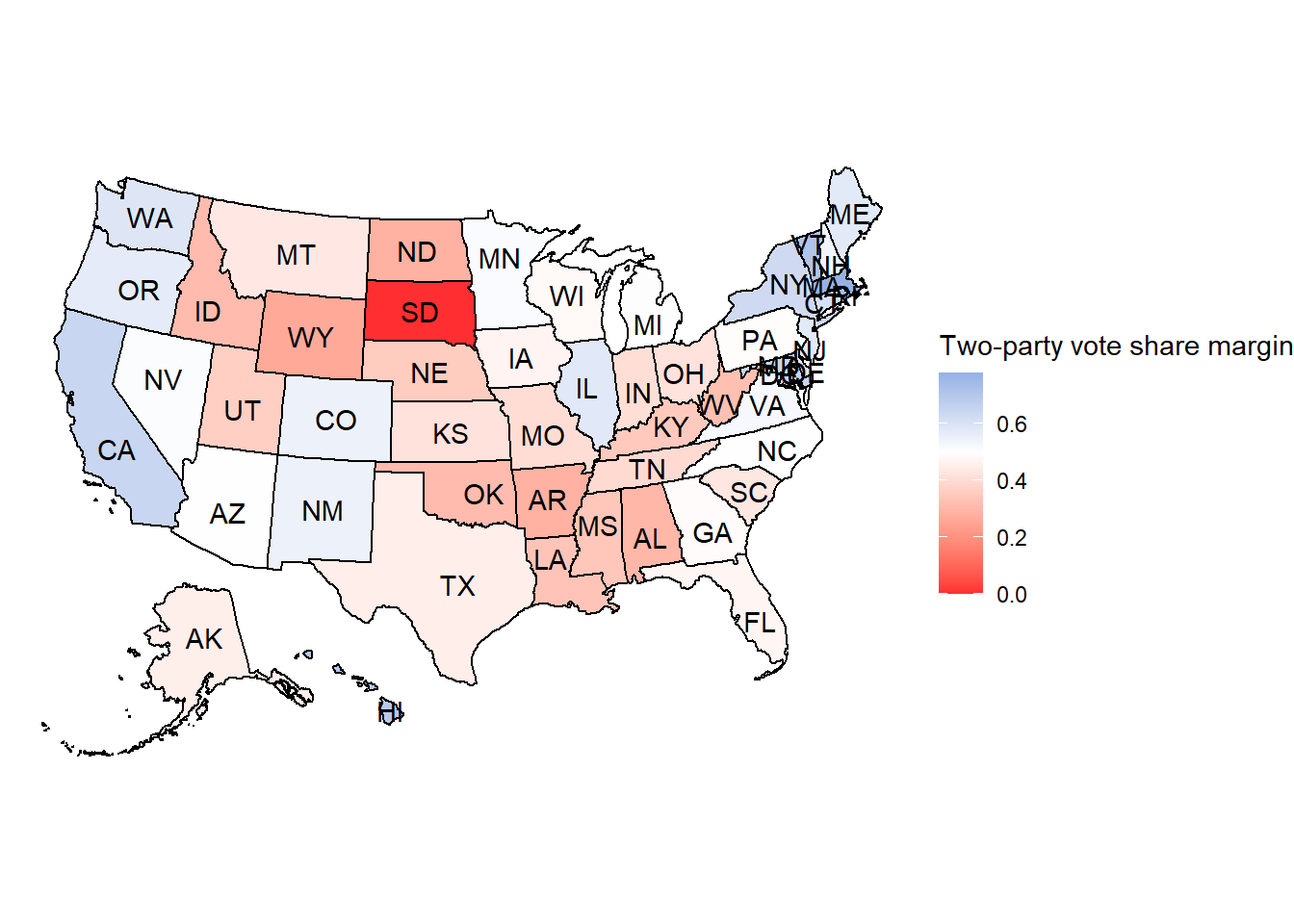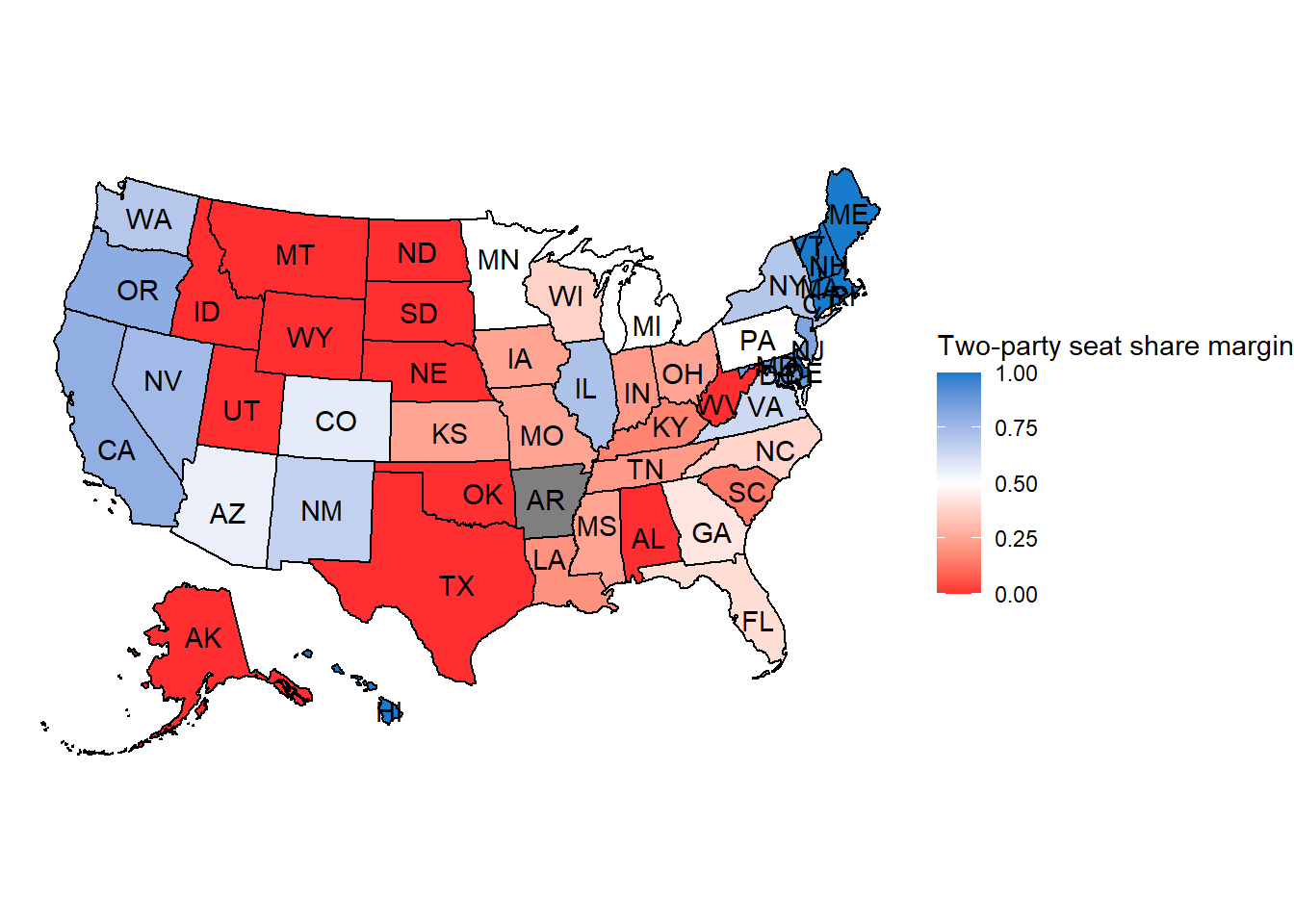on
Blog Post 1: Exploring Past House Vote and Seat Share
This blog post will be the first in a series of posts for Gov 1347: Election Analytics, a course at Harvard taught by Ryan Enos. Over the course of this semester, I will be building up my electoral knowledge in order to build a predictive model of the upcoming 2022 midterm elections.
Takeaways
What are we to make of this data? At a philosophical level, perhaps democracy isn’t working the way we think it should. If one believes that democracy should precisely align with popular sentiment, then one could make the argument that our institutions are in the way of the democratic process. They would be right in a certain respect, but the purpose of this blog post isn’t to make value judgements about gerrymandering, voter id laws, etc.
How does this inform our decision making process when building a model for the upcoming midterm elections? From my perspective, results like this lead me to believe that one needs to be wary of polls and popular sentiment. While these are some of the most obvious sources of predictive data, since it is the people who vote at the end of the day, there seem to be other factors that distort public sentiment and lead to skewed outcomes in the House. At this point in time I would like to try to predict the seats in the house, not the votes for it, so unless I change my mind I must look out for outside factors like this. Recent redistricting is one such factor that remains at the top of my mind.

